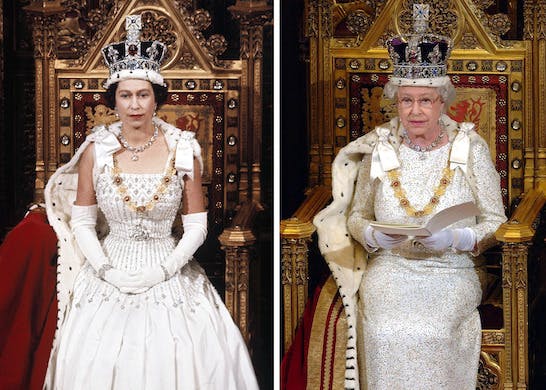Elizabeth’s Not for Quitting
Elizabeth has been a diligent monarch, in tune with the general mood and prepared to alter course when necessary.

“The King is dead. Long live the Queen.” Thus began the reign of Elizabeth II, 70 years ago today. She is the longest living monarch in British history and, though none can deny that she is entering the twilight of her time upon the throne, Queen Elizabeth continues to discharge her duties with grace. And she is fully capable of surprise.
As when she announced, in a message to her subjects on the commencement of her Platinum Jubilee, that when Prince Charles becomes king, the Duchess of Cornwall, Camilla, will be known as Queen Camilla — “Queen Consort,” officially.
Such a move signals just where the power lies within “The Firm.” No doubt Elizabeth has been keenly gauging the public’s reaction to Camilla since she married her eldest son and heir presumptive. The circumstances of their betrothal — especially as it relates to Diana, Princess of Wales — is a delicate matter at Buckingham Palace.
Royal watchers will argue whether Diana’s death in 1997 was the one time Elizabeth misjudged her people and put a foot wrong. Others, as your Diarist, believe the Queen’s initial response was marked by dignity and decorum.
It was only the extravagant eulogizing of the prime minister, Tony Blair at the time, that inadvertently fueled the negative public reaction that ensued. That’s what necessitated the unprecedented public show of grief among the senior members of the Royal Family.
Elizabeth has been a diligent monarch, in tune with the general mood and prepared to alter course when necessary. The survival of the crown is top priority among The Firm. She learned this when her uncle, Edward VIII, abdicated to marry a twice-divorced American, Wallis Simpson.
Her Majesty’s shy and retiring father was thrust into center stage, a role the stuttering George VI was, or so it seemed, ill-prepared to assume. The pressure of reigning during World War II led to his early death from lung cancer and to her own role as future monarch.
These lessons that personalities must bow to the demands of the British monarchy were well-learned, as Prince Andrew has discovered to his chagrin, having been stripped of all his royal and honorific titles. The Queen acted quickly — perhaps precipitously — to shore up the integrity of the Crown and to silence critics.
Using her monarchical prerogative to determine titles and, in this case, on a controversial Camilla, demonstrates a practiced hand at the tiller. Yet it also signals, however subtly, that her reign is winding down. As she herself acknowledges, her own elevation to the crown on February 6, 1952, was marked with sadness.
“It is a day that, even after 70 years, I still remember as much for the death of my father, King George VI, as for the start of my reign,” she writes.
For she is setting out the roster of royal titles that will be assumed once she passes from the stage. The inevitable transfer of royal power has been going on, unobtrusively, for many years. The death of Prince Philip, Duke of Edinburgh, last April merely heightened the march of mortality.
Like any materfamilias, Queen Elizabeth relegates the concerns of the outside world to a subordinate role, of necessity left to other hands. The survival of the House of Windsor is now top of mind for the nonagenarian monarch.
Happily, such thoughts of a time without Elizabeth are not for now. “I look forward to continuing to serve you with all my heart,” she writes in her Accession Day letter. She hopes her Platinum Jubilee will be an occasion for celebration and family reunions — not least, her subjects can imagine, within the Royal Family itself.
In closing, the Queen asks that her people “reflect on the positive developments in our day-to-day lives that have so happily coincided with my reign,” before signing off, “Your servant, Elizabeth.”
“God save the Queen!” indeed.
________
BrexitDiarist@gmail.com
Correction: Wallis is the first name of the Duchess of Windsor. It was given incorrectly in the bulldog.

